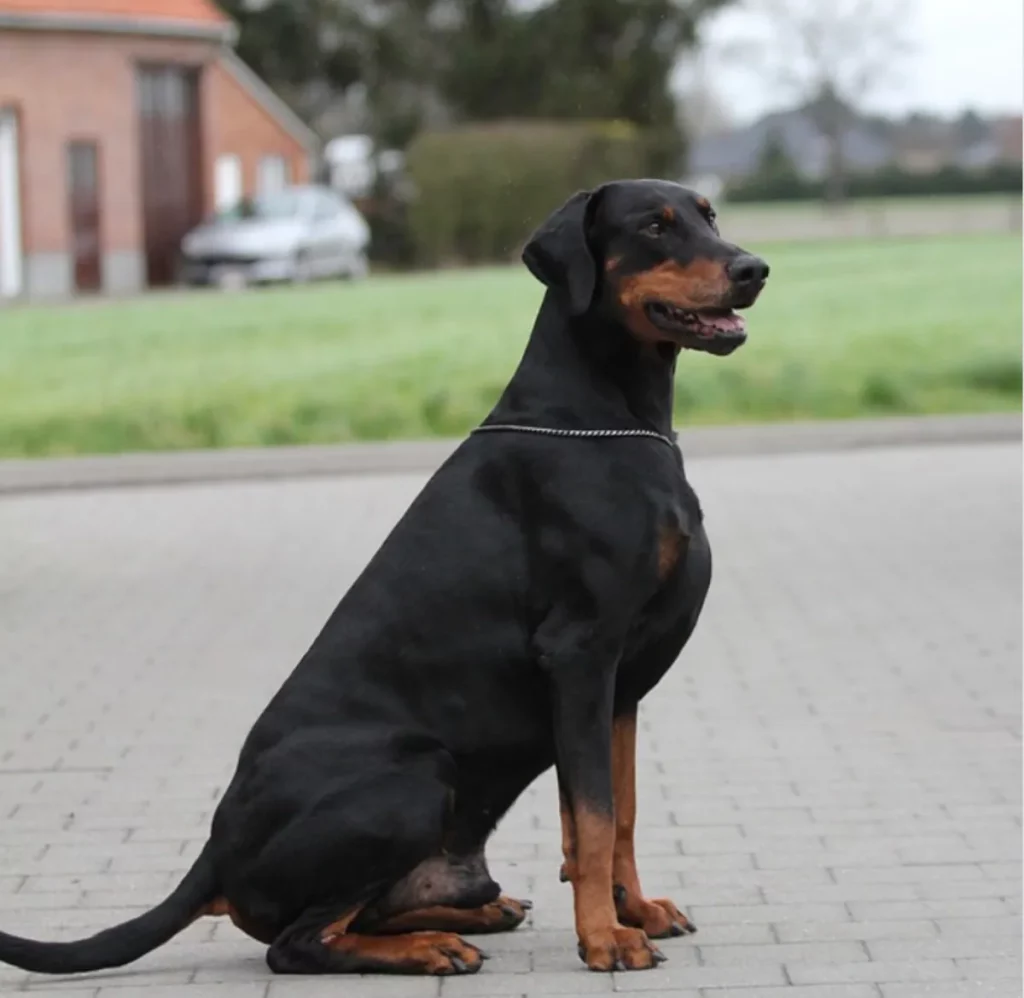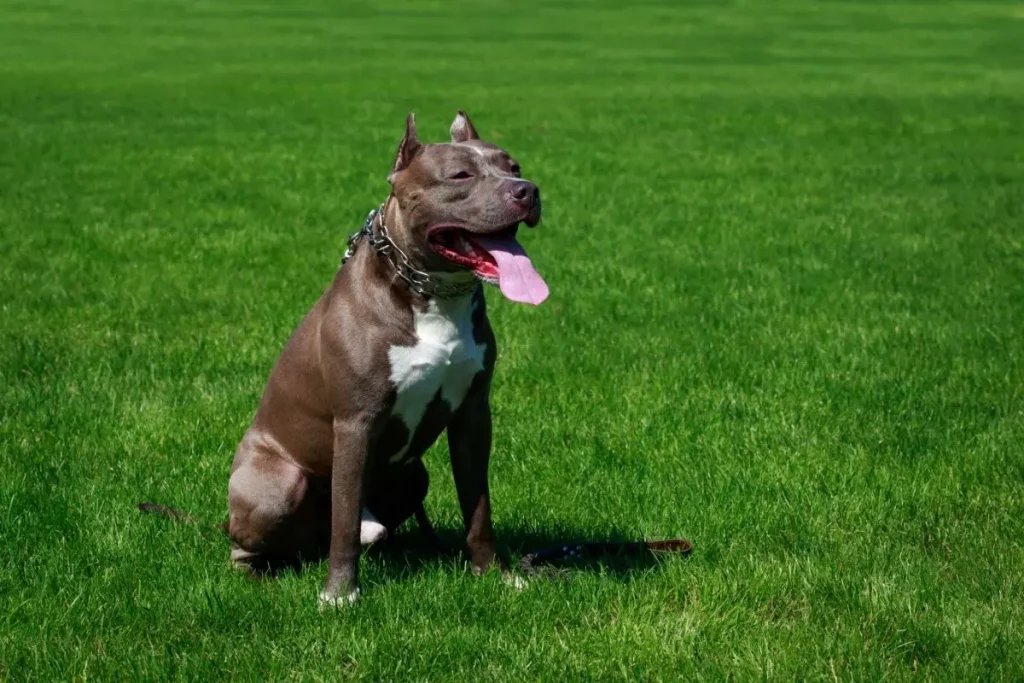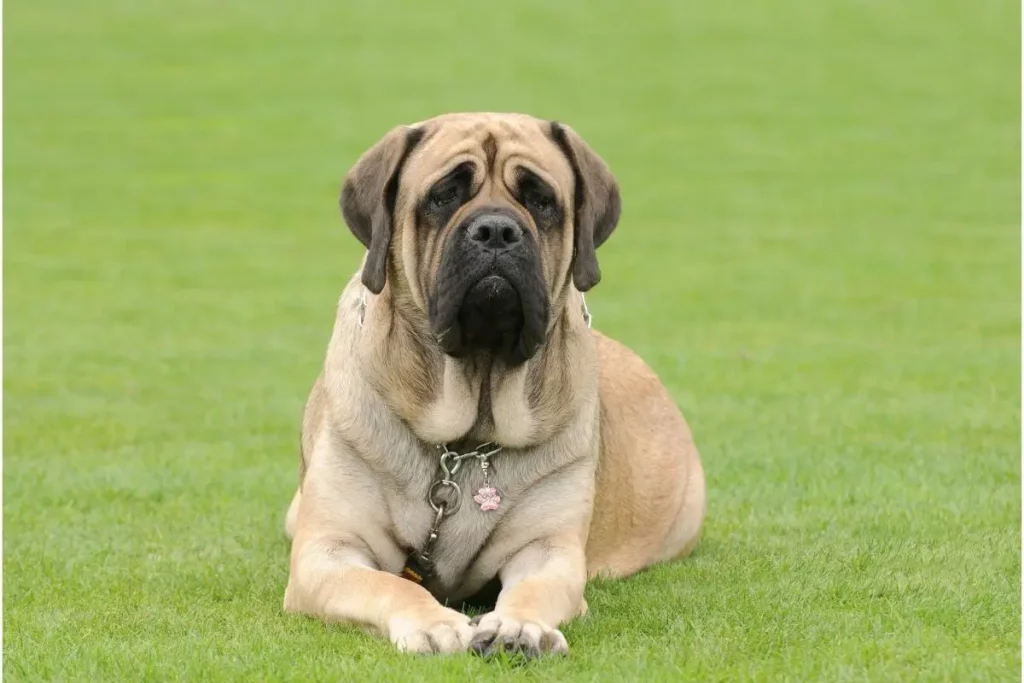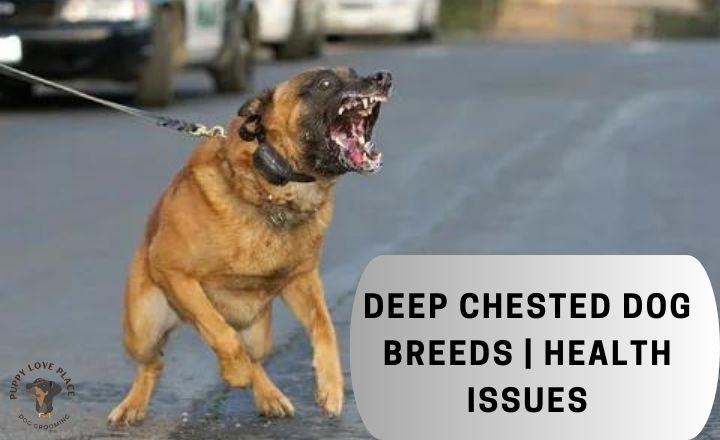Their broad chests and elegant postures often captivate our attention, making them stand out in any crowd. But beneath their captivating exterior lies a hidden world of health risks that every owner should know about.
Whether you already own one of these remarkable dogs or are considering bringing one into your home, here we will shed light on the specific health challenges faced by different deep chested dog breeds, equipping you with knowledge to ensure their well-being throughout their lives.
Deep Chested Dog Breeds
The most striking features of deep chested dog breeds is their well-defined, robust chest structure. This unique physical characteristic not only adds to their aesthetic appeal but also serves a functional purpose.
A deep chest allows for ample lung capacity, enabling these breeds to excel in high-intensity activities like running and working outdoors.
The German Shepherd is renowned for its deep chest, which gives it the stamina and endurance required for herding livestock over long distances. The Doberman Pinscher uses its deep chest to sustain a swift pace during police work or competitive obedience trials.
How Do I Know If My Dog Is Deep-Chested?
Take a close look at their body shape. Deep-chested dogs typically have a long and narrow rib cage, giving them that sleek appearance. Another clue can be found in their breed: certain breeds are more prone to having deep chests, such as Greyhounds, Doberman Pinschers, and Great Danes.

A Quick List Of Some Common Deep Chested Breeds
The Great Dane is often referred to as the Apollo of Dogs and is known for its regal appearance and gentle nature. With their deep chest and elegant build, they truly have a commanding presence.
Another deep-chested breed is the Doberman Pinscher, which is widely recognized for its athleticism and loyalty. Their deep chests allow them to have great lung capacity, making them excellent endurance dogs.
Breed that may not immediately come to mind when thinking about deep chested dog breeds is the Boxer. Known for their playful and energetic personalities, Boxers also have a distinct body shape with a strong chest that gives them an impressive silhouette.
This extra depth in their chest allows Boxers to be agile athletes, excelling in activities such as agility courses or competitive obedience.
Medium & Large Deep Chested Dog Breeds
Medium and large deep-chested dog breeds are impressive to see. They have strong bodies and proud postures that make people notice them. These breeds is the majestic Great Dane, known for its big size and grace.
These gentle giants have a deep chest that holds their large heart and lungs, giving them the stamina needed for hunting in the past. Another remarkable deep-chested dog breed is the Doberman Pinscher. With its slim body and alert face, this breed shows strength and agility.
The Doberman’s deep chest allows for more air in its lungs, helping it run fast. This also means they can handle more physical activity, making them great for sports like agility or obedience trials.
Small Deep Chested Dog Breeds
The prime example is the Dachshund, whose elongated body and short legs make them instantly recognizable. Despite their small size, these dogs have a surprisingly deep chest which allows them to have strong lungs and good endurance.
Another small deep-chested breed is the Pembroke Welsh Corgi. These intelligent and playful dogs might be low to the ground, but their deep chests give them excellent stamina for herding cattle or participating in agility competitions.
Health Issues To Look Out For In Deep-Chested Dogs
Deep chested dogs are not only known for their striking appearance but also their increased susceptibility to certain health issues.

Gastric Dilation (GD) And Gastric Dilation With Volvulus (GDV)
Deep-chested dogs can get a serious condition called Gastric Dilation (GD) and Gastric Dilation with Volvulus (GDV). This happens when the dog’s stomach fills up with gas or fluid and twists. The exact cause of GDV is not clear, but it may be due to genetics, diet, stress, and exercise.
The Important thing to know is that GDV can happen suddenly without warning. Dogs can go from feeling fine to being in trouble in just a few hours. It’s important for dog owners to know the early signs of GDV, like restlessness, bloated stomach, vomiting, fast breathing, weakness, or collapsing.
Is There A Treatment?
Deep-chested dogs are at risk of a serious condition called gastric dilatation-volvulus (GDV), where the stomach twists and fills with gas, cutting off blood flow to vital organs.
To prevent GDV, owners can feed their dogs smaller meals multiple times a day, use special bowls to slow down eating, and avoid strenuous activity after eating.
Treatment for GDV involves giving the dog fluids and managing shock. Emergency surgery may be needed to untwist and secure the stomach in place to prevent future occurrences.
Can You Prevent GD Or GDV In Deep-Chested Dogs?
GDV can be a life-threatening condition, there are steps that can be taken to reduce the risk. It is crucial to monitor your dog’s diet and feeding routine.
Feeding smaller meals more frequently throughout the day instead of one large meal can help prevent their stomach from becoming too full and potentially twisting.
Slow feeding bowls or puzzle feeders can encourage dogs to eat at a slower pace, reducing the chances of gulping down air while eating.
Diet Considerations
The most important factors to consider is the dog’s feeding schedule. Instead of providing one or two large meals per day, it is recommended to feed deep-chested dogs smaller, more frequent meals throughout the day. This can help reduce the likelihood of overeating and prevent rapid stomach expansion.

The type of food given can also influence GDV risk.
High-quality and easily digestible diets are recommended for deep-chested breeds as they tend to have sensitive stomachs.
Homemade Dog Treat Recipes plays an important role in diet.
Slow Your Dog’s Eating And Drinking Down
The effective measure is slowing down your dog’s eating and drinking habits. Rapid consumption of food or water increases the chances of excess gas and bloating in their stomachs, which can lead to GD or GDV in deep-chested breeds.
Investing in slow-feed bowls or puzzle toys that encourage slower eating can help regulate their intake.
Dividing your dog’s meals into smaller portions throughout the day can prove beneficial. Not only does this prevent them from gulping down large quantities at once, but it also promotes better digestion by allowing their stomachs to process food more efficiently.
Offer Reduced Portions
It is important to ensure that your dog receives a balanced and nutritious diet, overfeeding can put extra strain on their digestive system and increase the risk of gastric issues.
Reduced portions also play a role in preventing rapid eating, which is another factor that can contribute to gastric problems in deep-chested breeds.
Food Type
Like humans, dogs have specific nutritional needs that are based on their breed, age, and overall health.
Feeding your deep-chested dog the right type of food can significantly reduce the risk of these life-threatening conditions.
Exercise Considerations
The best ways to potentially prevent GD or GDV in deep-chested dogs is by being mindful of their exercise routine.
Regular exercise is essential for maintaining a dog’s overall health. High-intensity exercises, such as intense running or jumping, can potentially contribute to gastric distress and increase the likelihood of a twisted stomach in deep-chested dogs.
It is recommended to focus on low-impact exercises like walking or swimming to ensure their well-being.
Here is detail guide of Overfeeding Dog Signs.
A Couple Of Health Considerations And Recommendations
Deep-chested dogs are undeniably striking with their elegant appearance. Their unique physique comes with a few health considerations that owners should be aware of.

Lookout For Behavior Changes
These breeds may be more prone to developing hip dysplasia due to their size and structure. As responsible pet owners, it’s crucial to monitor your dog’s behavior for any signs of discomfort or difficulty in activities such as walking or rising from a lying position. If you notice any changes in behavior or mobility, it is recommended to consult with a veterinarian who can assess your dog’s hips and provide appropriate treatment options.
GD Or GDV Symptoms
The significant issue is gastric dilatation-volvulus (GDV), also known as bloat or torsion. This life-threatening condition occurs when the stomach fills with gas and twists on itself, cutting off blood flow to vital organs.
Common signs include restlessness, unproductive retching or vomiting, a distended abdomen, excessive drooling or salivating, rapid shallow breathing, and signs of weakness or collapse.
Owners should never ignore these indicators as prompt veterinary care can make all the difference in saving their pet’s life.
Monitor Their Stress Levels
The important aspect to monitor in deep-chested dogs is their stress levels. These breeds are often highly sensitive and can easily become anxious or stressed.
Stress can negatively impact their overall well-being and even contribute to certain health conditions. To help manage stress in deep-chested dogs, it’s crucial to provide them with a consistent routine and environment, offer mental stimulation through training or interactive toys, ensure they have a quiet space where they can retreat when feeling overwhelmed, and keep them socialized from an early age so they feel comfortable in different situations.
Prophylactic Gastropexy Surgery
To help prevent GDV in deep-chested dogs, veterinarians often recommend prophylactic gastropexy surgery. This surgical procedure aims to secure the dog’s stomach to the abdominal wall to prevent twisting or torsion from occurring in case of bloat.
Gastropexy can be performed through traditional open surgery or laparoscopy with minimal invasive techniques. It can provide great peace of mind for owners of deep-chested breeds who want to mitigate the risk of GDV.
Procedures like prophylactic gastropexy surgery can help reduce these risks significantly.
Dog Insurance
As a responsible pet owner, considering health insurance for your deep-chested dog breed should definitely make it onto your priority list.
These large breeds are often more susceptible to certain medical conditions compared to other canine counterparts. Insurance can provide financial support in case unexpected veterinary expenses arise due to conditions like hip dysplasia or heart diseases that are commonly seen in deep-chested dogs.
Having coverage ensures that you are able to provide the necessary care and treatment without worrying about exorbitant costs.
Conclusion
Deep chested dog breeds present unique health risks that owners must be aware of. Bloat and torsion are serious conditions that can be life-threatening if not addressed promptly.
It is important for dog owners to educate themselves about these risks and take preventative measures such as feeding smaller, more frequent meals, avoiding exercise immediately after meals, and monitoring their dog for signs of distress. Regular veterinary check-ups can help detect any potential issues early on.
By being proactive in their care, owners can ensure the long-term health and well-being of their beloved deep-chested dogs. Let us all prioritize the health of our pets by being vigilant and taking necessary precautions to prevent these potentially fatal conditions
Frequently Asked Questions
How Can I Identify If My Dog Is Barrel Or Deep Chested?
Observing your dog’s ribcage shape when standing upright can help determine if they have a barrel or deep chest.
What Is The Average Lifespan Of A Deep-Chested Dog Breed?
The lifespan of deep-chested dog breeds varies depending on the specific breed but generally ranges from 8 to 12 years.
- Cavapoo Dog| Detailed Guide - April 22, 2024
- Cavapoos are Aggressive Dogs or not? - April 22, 2024
- Size and Weight of Jackapoo | Detailed Explanation - April 22, 2024


